How to Start a Shopify Store with No Money (2025 Guide)
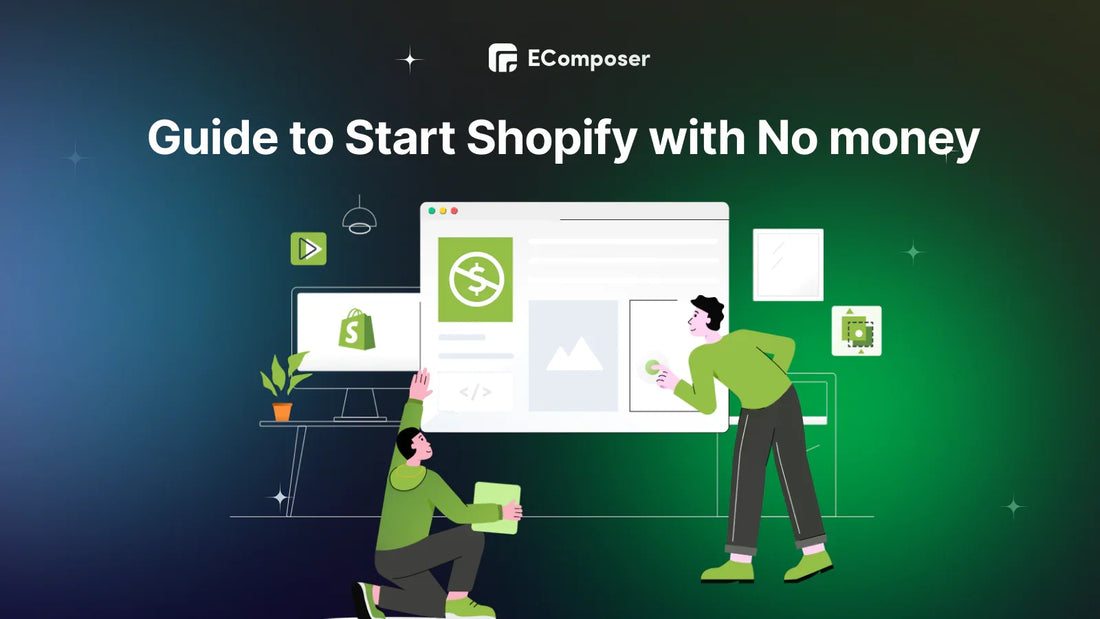
Table Of Contents
Starting an online business with no upfront costs and the chance to make good profits might seem impossible, but that can be possible for Shopify. So, can you really open a Shopify store without spending a cost?
If you’re working a full-time job or on a tight budget, the answer is yes! This guide will show you each step on how to start your Shopify store with no money. By the end, you’ll learn the basics of Shopify, how to find products, set up your Shopify store, and use free marketing strategies to grow your business. Let’s get started!
Should you Start a Shopify Store with No Money?

You’ve probably heard of startups getting big investments or taking out large loans. While funding or loans are options, they aren’t always the best choice for everyone.
Starting a business with no money has its ups and downs. Here’s what to keep in mind:
Pros of Starting a Business with No Money
- No Debt: You’ll have full control over your business without owing money to banks, investors, or even friends and family.
- Lower Risk: If your business succeeds, you’ll reap the benefits. If it doesn’t, the only loss is your time, not your savings.
- Accessible for Everyone: No matter your financial situation, you can turn your idea into a reality and work towards building a successful business.
Cons of Starting a Business with No Money
- Slower Growth: Without money, it may take longer to expand and scale your business.
- Limited Resources: Your website, inventory, and marketing efforts might be basic. You’ll need to stretch every dollar carefully.
- Doing It All Yourself: Without funds, hiring help might not be an option at first, meaning you’ll handle everything on your own until the business makes money.
Should You Start a Shopify Store with No Money?
Starting a Shopify store with no money is entirely possible, but it needs careful planning and a lot of effort. If you’re willing to put in the time to research products, find free tools, and handle tasks yourself, this can be a great way to begin your entrepreneurial journey without financial stress.
However, keep in mind that growth might be slower, and you’ll need to get creative with marketing and resources. It’s a good option for those who want to test the waters of e-commerce before investing heavily.
5 Business Models to Start with No Money 2025
Starting an online business doesn’t always require a big budget. Some business models are more affordable and beginner-friendly than others. If you’re just starting out, here are five options to consider:
1. Dropshipping

(Image Source: Dropshipping Store Template)
Dropshipping is a low-cost business model where you don’t need to stock products. Instead, you partner with suppliers who handle inventory and shipping directly to your customers. You only pay for a product after it sells, making it a flexible and budget-friendly option.
To get started with dropshipping:
- Find trending products: Platforms like TikTok can help you discover popular items. Search for hashtags like #tiktokmademebuyit for ideas.
- Use free marketing strategies: Create and post short-form videos on social media to showcase your products.
- Set up a basic website: Use Shopify’s free trial to build your first store.
2. Print-on-Demand

(Image Source: POD Store Template)
With print-on-demand, you can sell custom products like t-shirts, tote bags, or mugs without holding inventory. These services print and ship items as they’re ordered, keeping startup costs low.
Benefits of print-on-demand include:
- Minimal upfront expenses.
- No need for storage.
- An opportunity to test product ideas before committing to bulk production.
This model is perfect for creative entrepreneurs who want to launch a brand with minimal risk.
3. Service-Based Business

(Image Source: HealthCare Clinic Template)
Service-based businesses let you use your skills and time to generate income. Examples include freelance writing, virtual assistance, or social media management. These businesses are inexpensive to start and can grow as demand increases.
If you have a particular skill or expertise, start small and scale by hiring help when needed. You can even pair your services with another model, like offering virtual styling services alongside an online thrift store.
4. Digital Products

(Image Source: Online Course Template)
Digital products like the online courses, ebooks, or templates, are cost-effective to create and can be sold repeatedly. All you need is an idea, helpful content, and an internet connection.
Popular digital product ideas:
- Photography presets.
- Educational resources like workbooks or guides.
- Video tutorials or courses.
Once created, you can list these products using tools like Shopify’s Digital Downloads app.
5. Handcrafted Goods

(Image Source: Handcrafted Goods Template)
If you’re creative, turn your hobby into a business by selling handmade products. Whether it’s candles, jewelry, or upcycled clothing, you can start small and then grow as you gain traction.
Tips for starting with handcrafted goods:
- Begin with simple projects to keep initial costs low.
- Use crowdfunding platforms to raise money for materials.
- Repurpose old items to create unique, eco-friendly products.
Each of these business models offers a way to start earning without a big upfront investment, letting you grow at your own pace while keeping risks low. Choose the one that aligns with your skills and interests to begin your entrepreneurial journey.
10 Steps to Start a Shopify Store with No Money
Step 1: Do a Market Research

Starting a Shopify store with no money means you need to be strategic about the products you choose and the markets you target. The first step is conducting market research to find products that are in demand but don’t require upfront costs.
- Define your target audience: You should start with defining your target audience—these are the people most likely to buy what you’re selling. With no money to spend on expensive ads or inventory, understanding your audience’s needs and interests is key to making your marketing more effective. You can create buyer personas to help understand what your customers want.
- Fill the gap of customers demand and budget-friendly begin: For a no-money approach, focus on business models that require little to no investment upfront. Like we suggest above, it’s best to choose one that is on current trend and you can also be interested in.
- Take advantage of real data: To do market research, you can use surveys, interviews, or focus groups to gather information. You can also check industry reports and other sources to get a bigger picture of the market.
- Study your competitors: Also, consider your competition. Understand what they’re offering and think about how you can stand out. What’s your unique selling point that will make customers choose you?
- Estimate market size: Lastly, try to estimate how big the market is and how much of it you could capture, so you can set realistic expectations for your business growth.
When researching the market, you’ll be better prepared to choose the right products or niches that don’t require a big upfront investment but have potential to attract customers.
Step 2: Plan ahead for a Business

Once you’ve picked your product and market, it’s time to plan how you’ll run your Shopify store without spending any money. A business plan is like your roadmap—it helps you stay on track and shows to others that your idea can work, even with no budget.
To help your plan work with no money, follow these tips:
- Include the basics: It could be your mission statement (why your business exists) and financial projections (how much you expect to earn and spend). Since you’re not starting with money, focus on ways to grow that don’t require big investments.
- Sales strategy is super important. Without such a big amount of money for investment, Shopify with a free trial is the best choice to help you set up your store. You can also link your store to sites like Etsy or Amazon to reach more people.
- B2C or B2B?: Next, decide whether to sell directly to customers (B2C) or to other businesses (B2B). Starting small with dropshipping business or digital products can keep things affordable while you build your business.
With the right plan, you can grow your Shopify store and build your business without needing to spend money at the start.
Step 3: Manage Product Sourcing

Once you've got your business idea ready, the next step is figuring out how to get your products without spending money upfront. You have a few options depending on your business model.
- Option 1. Make your own products: You can sell things like handmade items, you can set up a workspace at home or rent a small studio. Just make sure you know the legal rules for home-based businesses, especially if you're making things like food or cosmetics.
- Option 2: Go for a print-on-demand service: These companies create and ship products with your branding, so you don't need to buy stock or pay for production upfront. As your business grows, you might even consider working with a manufacturer to make custom products with your brand.
- Option 3: Source them from a manufacturer or reseller: Some businesses work with wholesalers, while others use a dropshipping model. With dropshipping, your supplier ships the products directly to your customers, so you don’t need to handle inventory at all. Best part is that you don’t have to spend money on products until someone buys them from your store.
Each option helps you keep costs low while finding the right items for your Shopify store, helping you keep costs low and your business growing with minimal risk.
Step 4: Create a Free Shopify Account/ Get Trial
The next step is to start a free trial of Shopify. This allows you to explore the platform for three days, and after that, you'll only pay $1 for the first 3 months of your Shopify plan. In the meantime, you can grow your business day by day until scaling it up.

Right now, Shopify is offering a huge deal—3 months for just $1 per month. Don’t miss out!
Grab $1 Deal Now!Shopify offers two types of trials:
- The regular trial
- And a dropshipping-focused trial
The dropshipping trial gives you access to tools and resources specifically designed to help you start a dropshipping business.
You don’t need to enter any credit card information to begin the trial. However, Shopify will ask you a few questions to understand the type of business you’re setting up, which helps tailor the store setup process for you. You can skip these questions if you'd like, but answering them can make setting up your store easier.

Once you've completed the setup, you'll be inside your Shopify account, ready to start adding products, choosing a theme, and setting up payment and shipping options for your store.
Step 5: Add Products to Shopify Store
Once you've signed up for your Shopify free trial, it's better to start by adding your products before designing a store.
The reason is simple: your product range will greatly affect your store's layout, and it's easier to design your store around your products. You don’t want to spend a lot of time customizing your theme only to find out that your product photos don’t fit well with it.

To add your first and foremost product, go to Products > Add your products and add products to collections in your Shopify dashboard. Here’s what you’ll need to include:
- Product Title: This is what customers will see when browsing your store or finding your product in search results. Keep it clear, accurate, and short.
- Product Description: This is your opportunity to convince customers to buy! Write descriptions that speak directly to your target audience. Use simple language and break it into bullet points or short paragraphs for easy reading. Highlight unique features, promotions, or special offers, and address any concerns customers may have.
- Media: You can add product photos, videos, or 3D models. Make sure your media looks great—use a good camera or work with a professional if possible. Ensure images are clear and meet Shopify’s resolution requirements
Apart from those, you will need to add pricing and inventory, shipping information, variants and search engine listings. This process helps you get your store set up for success with products that look great and are easy for customers to find and purchase!
That is how easily you add products and collections to your Shopify store. To explore more details, you can explore the full article on full guide to add products to Shopify.
Step 6: Set Up your Shopify Store
Now that you’ve got your products, and collections ready, it’s time to pick your store’s theme. You don’t have to worry about the cost since Shopify has a lot of free themes with a lot of niches for you to choose from.
Visit the store and choose one Free Shopify Theme that fits your store’s needs. Don’t worry too much about colors or fonts yet, as these can be customized later. Pick a theme based on features and layout.

After your theme is selected, go to Online Store > Themes > Customize to edit your store’s layout, colors, fonts, and logo to go along well with your brand. This is also when you’ll create your homepage and other essential pages and ensure it’s clean, easy, and simple to navigate for your visitors:
- About Us: Share the story of your business and values.
- FAQs: Answer common questions about your products.
- Policy Pages: Include terms of use, privacy policies, return policies, etc.
- Contact Page: Provide a method for customers to reach you through phone, email, or a contact form.
- Blog: Share updates, news, or content relevant to your customers.
To create these, go to Online Store > Pages and click ‘Add Page’. You can then fill in the title and content, and set any specific template, like for a contact page.
Next, you'll want to set up navigation menus so customers can easily find your key pages. Go to Online Store > Navigation to edit the main menu, where you can add links to your pages or collections.
*Pro tip: Free Shopify themes might limit you in terms of customization and personalization of your store, our recommendation is to use Shopify Page Builder app with free plan to design your own stunning page, especially with landing page for special occasion or homepage where to impress customers right on the first look.
With your pages, navigation, and theme set up, you’re well on your way to start your store! Remember to also make a checklist before launching to ensure things are ready.
Step 7: Focus on Content Creation and Marketing

Now that your Shopify store is up and running, it's time to focus on getting customers. It may seem like you're done, but there's still plenty you can do to grow your store without spending any money. Here’s how:
- Sell on More Free Platforms: Shopify lets you connect your store to big platforms like Facebook, Twitter (for U.S. users), Amazon, and Etsy. These sites already have lots of users, so by listing your products there, you can reach more people for free.
- Create Content to Attract Visitors: Shopify has a blog feature that you can ultilize to create helpful or interesting posts that bring people to your store. If done right, blogging can help you get traffic without paying for ads. It's a great way to connect with potential customers and improve your search engine rankings.
- Use Free Apps to Marketing Your Store: Shopify has tons of free apps you can add to your store to make it work better. From marketing tools to simple analytics, these free apps can help improve your store without costing a penny.
- Promote Your Store for Free: You don’t have to spend money on ads to get the word out. Use social media channels like Facebook, Instagram and Pinterest to show off your products and interact with potential customers. You can also join the online groups or communities related to your business to spread the word for free.
Step 8: Optimize Search Engines

Once your store is live, you want people to find it easily. The good news is, you can help your store show up in search results on Google—without spending money on ads. Here’s how to do it:
- Use Simple Keywords: Think about what words people would type when they’re looking for your products. For example, if you sell handmade candles, words like “best candles” or “handmade candles” are good to use. Add these keywords to your product descriptions, titles, and even in your blog posts. It helps Google understand what your store is about and show it to the right people.
- Write Clear, Descriptive Product Descriptions: Make sure your product descriptions are easy to read and explain what makes your products special. The clearer you are, the better Google can rank your store for relevant searches.
- Add Alt Text to Images: Google can’t see pictures, but it can read the text you add to your images (called "alt text"). Make sure you describe what’s in your photos with simple words. For example, if you sell a red ceramic mug, write “red ceramic mug with white design” as the alt text.
- Use SEO content to Attract Traffic: Blogging is a powerful SEO content to get noticed by Google. For instance, if you sell skincare products, write a blog post of about “6 tips for healthy skin” or “how to choose the right moisturizer.” The more helpful and interesting your content is, the more likely Google will show it to people looking for answers.
- Make Your Store Easy to Navigate: A clean, easy-to-use website is not only great for visitors but also helps Google understand your store. Keep things simple, organize your products into categories, and make sure your site loads fast. The easier it is for people to browse, the better your chances are of ranking high on Google.
It’s all about using these free, simple SEO tips, you'll start attracting more visitors and, hopefully, more sales. The best part? It’s all free!
Step 9: Provide Excellent Customer Support

Great customer support can make all the difference, even if you’re running a business with no money. When customers feel cared for, they’re more likely to return and recommend your store to others. Here’s how to offer awesome support, even on a budget:
- Respond Quickly: If a customer has a question or issue, reply as soon as you can. Fast replies show that you care about your customers and their experience. You don’t need fancy tools—just check your email or social media regularly to stay on top of messages.
- Be Friendly and Helpful: When a customer finds you, make sure to be polite, friendly, and understanding. If they have a problem, listen carefully and offer a solution. For example, if someone asks for a refund because a product arrived damaged, kindly explain the steps to return it and send them a new one if possible.
- Use Social Media to Connect: If you’re on a tight budget, social media is a great way to provide support without spending money since being active on social media helps customers feel like they’re talking to a real person.
- Create an FAQ Page: To save time answering the same questions over and over, create a simple FAQ (Frequently Asked Questions) page on your website. Include answers to common questions like shipping times, returns, or sizing information. It’s easy to do and saves you a lot of time!
- Ask for Feedback: After a purchase, ask customers how their experience was. Did they enjoy the product? Was it easy to find what they needed? It shows you care about improving, and you might get some great tips on how to make your store better.
Offering great customer service doesn’t have to cost a thing. It’s better to be kind, quick, and helpful, you’ll build trust and turn first-time buyers into loyal customers!
Step 10: Analyze and Improve Gradually

Once your store is up and running, it's time to keep improving it little by little. Don't worry, you don't have to make big changes all at once. Here’s how you can do it:
- Check Your Store’s Progress: Shopify has tools that let you see how your store is doing. You can find out things like how many people are visiting, what they’re buying, and where they’re coming from. It helps you know what’s working well and what needs fixing.
- Listen to Your Customers: Pay attention to what your customers are saying. If they’re leaving feedback or asking the same questions, take note. For example, if customers are asking about sizing, you might want to add clearer size guides. Listening helps you improve.
- Make Small Changes: Don’t feel the need to redo everything at once. Instead, make small improvements here and there. You could update product descriptions, change your homepage design, or try different photos. Track the changes to see what works best.
- Think About Growing: As your store starts making some money, consider reinvesting that back into your business. You could use the extra funds to run ads, improve your website, or get tools that make your store run smoother. Growing little by little helps your business stay strong and continue to improve.
You just need to be a little bit more patient, making small, steady changes, you’ll keep improving your store over time. The key is to keep learning, testing, and making small tweaks—it all adds up in the end!
Tips for Starting a Free Shopify Business

Starting a Shopify store with no money might sound hard, but it’s totally possible! There are a lot of ways to keep costs low while getting your business up and running. Here are some tips to help you start your Shopify store for free:
- Use Shopify’s Free Trial
Shopify offers a 3-day free trial (sometimes more depending on promotions). It means you can set up and start your store without paying anything upfront. Take full advantage of this time to build your store, add products, and see how everything works before you start paying for a plan.
- Find Free Shopify Apps
There are plenty of free apps available in the Shopify App Store. These apps can handle everything from marketing to customer service.
For example, you can find apps to help you with email marketing, social media posts, or even sales notifications. Normally, these apps will have a free plan with basic features for using, it will help you save a lot of money.
Just do some research, browse the app store to see what’s available. Here is some of the popular ones:
- Store design: EComposer Landing Page Builder
- Conversion rate optimization: EcomRise: Upsell & Bundles
- Shoppable Layouts: Nitro Lookbook & Image Gallery
- Print on demand: Printful, Printful
- Email: Shopify Email
- Social media: Tiktok
- Affiliate Marketing: UpPromote
- Free Design Tools
You don’t need a big budget to make your store look professional. There are many free tools you can use to create beautiful product images, banners, and other visuals. Canva is a great tool that offers lots of free templates to design eye-catching graphics for your store.
- Social Media Marketing (Free)
Social media is one of the best and cheapest ways to promote your store. Create free accounts on Instagram, Facebook, or TikTok and start sharing your products. You can even use these platforms to connect with potential customers. Posting regularly and using hashtags will help you get noticed without spending any money.
With good feedback and reviews, you can even use them as social proofs on your Shopify store later on.
- Take Advantage of Free MarketingTools:
- Google Keyword Planner and Google Trends: Perfect for finding what people are searching for and planning your SEO strategy.
- SEMrush: Offers insights into keywords, backlinks, and competitors for SEO.
- Brevo: Great for email marketing with a free plan for small campaigns.
- Grammarly: Helps you write clear and error-free content for blogs, emails, or product descriptions.
- Google Analytics: Tracks your site’s traffic, popular pages, and customer behavior.
- Use Free Shipping Supplies
If you're starting a physical product store, you can often get free shipping supplies from major couriers like USPS, UPS, or FedEx. They’ll send you boxes, envelopes, and labels at no cost, which can save you money on packaging.
Starting a Shopify store without spending money is all about being resourceful. By using free trials, apps, and tools, you can help create a very solid foundation for your business without needing a big budget.
Best Practices to Start a Shopify Store

Starting a Shopify store with no money means you’ll need to be creative, resourceful, and focused. Here are some simple and effective tips to help you launch and grow your store:
- Pick a Niche You Truly Care About
Selling something you love makes the whole process more fun and keeps you motivated. For example, if you’re into fitness, you could sell workout gear or healthy snacks. Passion shows in how you promote your products, and it makes a real difference to customers.
- Start Simple and Build Over Time
You don’t need 100 products to launch your store. Start with just a few items that are easy to manage. For example, if you’re selling handmade jewelry, focus on one or two designs first. As you grow, add more products based on what customers like.
- Create Clear and Engaging Product Pages
Make it easy for people to understand your products. Use high-quality photos, simple descriptions, and highlight benefits. For instance, instead of saying “Organic Coffee Beans,” try “Rich, Smooth Organic Coffee Beans – Perfect for Your Morning Boost.”
- Build Trust with Your Customers
Customers will trust your store more if you provide detailed policies, like shipping and returns. It’s better to be transparent and communicate openly. For example, let them know if an item might take a few extra days to ship.
- Engage with Your Audience
We could never forget about social media these days, they are too popular and we live with it everyday. So make the most out of it to connect with potential customers.
Instead of just posting about your products, share behind-the-scenes moments, tutorials, or tips related to your niche. For instance, if you sell skincare products, show a simple morning skincare routine using your items.
- Stay Consistent and Patient
Success doesn’t happen overnight so just keep working on your store, remember to engage with your audience, and improve your offerings. Even small, daily efforts can add up over time.
- Learn as You Go
Each step teaches you something new. If a product doesn’t sell as expected, try to analyze why and adjust based on real data. If your ads aren’t working, then try a different approach. Every challenge is an opportunity to grow stronger and better.
With these best practices, you’ll surely create a Shopify store that starts small but has the potential to grow into something big. And remember, every big brand once started just like you!
Conclusion
Starting a Shopify store with no money might feel like a big challenge, but it’s absolutely doable with the right mindset and strategy. It’s better to take advantage of free trials, free apps, and creative marketing tools, then you can build a strong foundation for your business without spending a dime upfront.
Remember, even the biggest businesses started small. The key is to stay consistent, just keep learning, and never give up. Think of your store as a journey since each of small step you take will bring you closer to your goal.
FAQs
- How do I open a Shopify store with no money?
You can open a Shopify store without spending anything upfront by taking advantage of their free trial. Start by choosing a free theme to design your store and list your products. Shopify’s app store also has free tools to help with SEO, customer engagement, and more, so you can build your store without breaking the bank.
- What is the easiest business to start with no money?
One of the easiest businesses to start with no money is dropshipping. You don’t need to buy or store products—when someone orders, your supplier sends the product directly to them.
Another great option is selling digital products like eBooks or templates because you only need to create them once. Both ideas can be set up quickly and don’t require a big budget, making them perfect for beginners.
- How to start dropshipping for free?
You can start dropshipping for free by using Shopify’s trial and free apps like Oberlo or DSers. These apps let you add products to your store without buying inventory upfront.
Focus on promoting your store through free platforms like Instagram, TikTok, or blogging. When a customer creates an order, the supplier ships it directly to them, so you only pay for the product after you’ve made a sale.









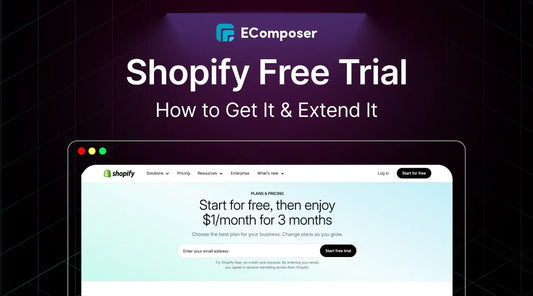
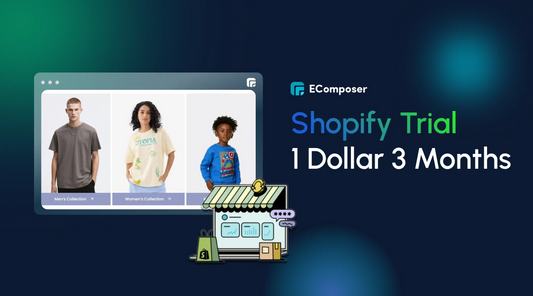
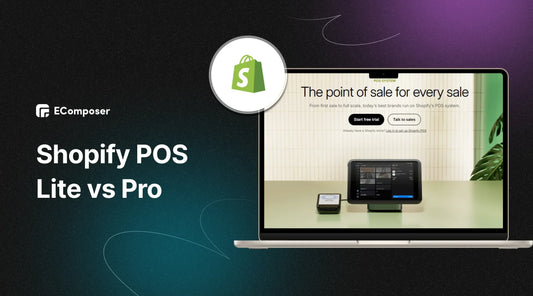
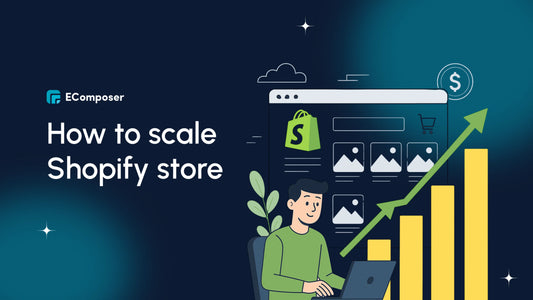
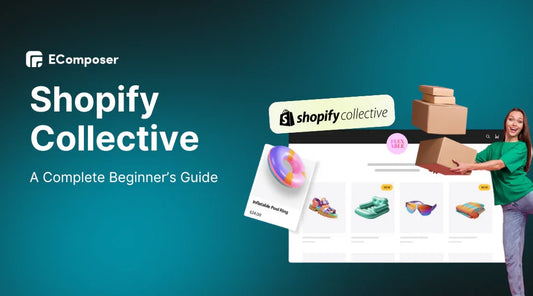
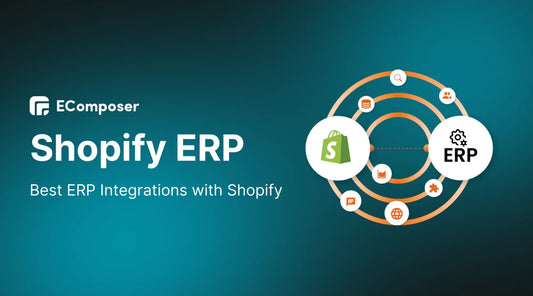







0 comments